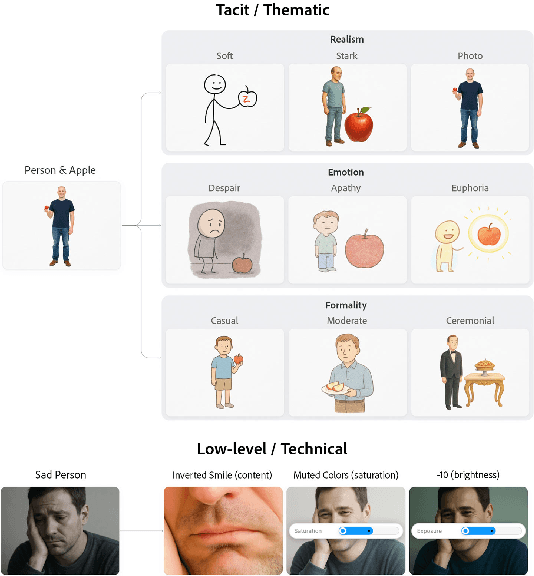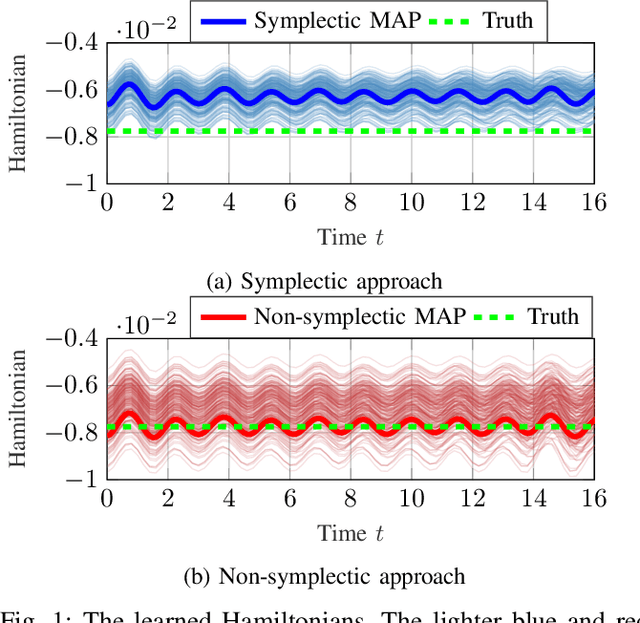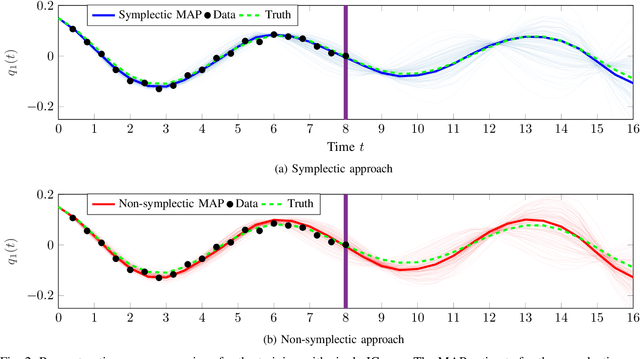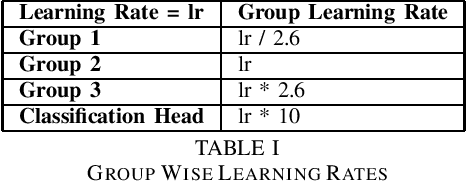Harsh Sharma
NVIDIA Nemotron Nano 2: An Accurate and Efficient Hybrid Mamba-Transformer Reasoning Model
Aug 21, 2025



Abstract:We introduce Nemotron-Nano-9B-v2, a hybrid Mamba-Transformer language model designed to increase throughput for reasoning workloads while achieving state-of-the-art accuracy compared to similarly-sized models. Nemotron-Nano-9B-v2 builds on the Nemotron-H architecture, in which the majority of the self-attention layers in the common Transformer architecture are replaced with Mamba-2 layers, to achieve improved inference speed when generating the long thinking traces needed for reasoning. We create Nemotron-Nano-9B-v2 by first pre-training a 12-billion-parameter model (Nemotron-Nano-12B-v2-Base) on 20 trillion tokens using an FP8 training recipe. After aligning Nemotron-Nano-12B-v2-Base, we employ the Minitron strategy to compress and distill the model with the goal of enabling inference on up to 128k tokens on a single NVIDIA A10G GPU (22GiB of memory, bfloat16 precision). Compared to existing similarly-sized models (e.g., Qwen3-8B), we show that Nemotron-Nano-9B-v2 achieves on-par or better accuracy on reasoning benchmarks while achieving up to 6x higher inference throughput in reasoning settings like 8k input and 16k output tokens. We are releasing Nemotron-Nano-9B-v2, Nemotron-Nano12B-v2-Base, and Nemotron-Nano-9B-v2-Base checkpoints along with the majority of our pre- and post-training datasets on Hugging Face.
ThematicPlane: Bridging Tacit User Intent and Latent Spaces for Image Generation
Aug 08, 2025
Abstract:Generative AI has made image creation more accessible, yet aligning outputs with nuanced creative intent remains challenging, particularly for non-experts. Existing tools often require users to externalize ideas through prompts or references, limiting fluid exploration. We introduce ThematicPlane, a system that enables users to navigate and manipulate high-level semantic concepts (e.g., mood, style, or narrative tone) within an interactive thematic design plane. This interface bridges the gap between tacit creative intent and system control. In our exploratory study (N=6), participants engaged in divergent and convergent creative modes, often embracing unexpected results as inspiration or iteration cues. While they grounded their exploration in familiar themes, differing expectations of how themes mapped to outputs revealed a need for more explainable controls. Overall, ThematicPlane fosters expressive, iterative workflows and highlights new directions for intuitive, semantics-driven interaction in generative design tools.
Team ACK at SemEval-2025 Task 2: Beyond Word-for-Word Machine Translation for English-Korean Pairs
Apr 29, 2025Abstract:Translating knowledge-intensive and entity-rich text between English and Korean requires transcreation to preserve language-specific and cultural nuances beyond literal, phonetic or word-for-word conversion. We evaluate 13 models (LLMs and MT models) using automatic metrics and human assessment by bilingual annotators. Our findings show LLMs outperform traditional MT systems but struggle with entity translation requiring cultural adaptation. By constructing an error taxonomy, we identify incorrect responses and entity name errors as key issues, with performance varying by entity type and popularity level. This work exposes gaps in automatic evaluation metrics and hope to enable future work in completing culturally-nuanced machine translation.
Nonlinear energy-preserving model reduction with lifting transformations that quadratize the energy
Mar 04, 2025



Abstract:Existing model reduction techniques for high-dimensional models of conservative partial differential equations (PDEs) encounter computational bottlenecks when dealing with systems featuring non-polynomial nonlinearities. This work presents a nonlinear model reduction method that employs lifting variable transformations to derive structure-preserving quadratic reduced-order models for conservative PDEs with general nonlinearities. We present an energy-quadratization strategy that defines the auxiliary variable in terms of the nonlinear term in the energy expression to derive an equivalent quadratic lifted system with quadratic system energy. The proposed strategy combined with proper orthogonal decomposition model reduction yields quadratic reduced-order models that conserve the quadratized lifted energy exactly in high dimensions. We demonstrate the proposed model reduction approach on four nonlinear conservative PDEs: the one-dimensional wave equation with exponential nonlinearity, the two-dimensional sine-Gordon equation, the two-dimensional Klein-Gordon equation with parametric dependence, and the two-dimensional Klein-Gordon-Zakharov equations. The numerical results show that the proposed lifting approach is competitive with the state-of-the-art structure-preserving hyper-reduction method in terms of both accuracy and computational efficiency in the online stage while providing significant computational gains in the offline stage.
Data-driven Model Reduction for Soft Robots via Lagrangian Operator Inference
Jul 11, 2024Abstract:Data-driven model reduction methods provide a nonintrusive way of constructing computationally efficient surrogates of high-fidelity models for real-time control of soft robots. This work leverages the Lagrangian nature of the model equations to derive structure-preserving linear reduced-order models via Lagrangian Operator Inference and compares their performance with prominent linear model reduction techniques through an anguilliform swimming soft robot model example with 231,336 degrees of freedom. The case studies demonstrate that preserving the underlying Lagrangian structure leads to learned models with higher predictive accuracy and robustness to unseen inputs.
Dataflow-Aware PIM-Enabled Manycore Architecture for Deep Learning Workloads
Mar 28, 2024Abstract:Processing-in-memory (PIM) has emerged as an enabler for the energy-efficient and high-performance acceleration of deep learning (DL) workloads. Resistive random-access memory (ReRAM) is one of the most promising technologies to implement PIM. However, as the complexity of Deep convolutional neural networks (DNNs) grows, we need to design a manycore architecture with multiple ReRAM-based processing elements (PEs) on a single chip. Existing PIM-based architectures mostly focus on computation while ignoring the role of communication. ReRAM-based tiled manycore architectures often involve many Processing Elements (PEs), which need to be interconnected via an efficient on-chip communication infrastructure. Simply allocating more resources (ReRAMs) to speed up only computation is ineffective if the communication infrastructure cannot keep up with it. In this paper, we highlight the design principles of a dataflow-aware PIM-enabled manycore platform tailor-made for various types of DL workloads. We consider the design challenges with both 2.5D interposer- and 3D integration-enabled architectures.
Bayesian identification of nonseparable Hamiltonians with multiplicative noise using deep learning and reduced-order modeling
Jan 23, 2024Abstract:This paper presents a structure-preserving Bayesian approach for learning nonseparable Hamiltonian systems using stochastic dynamic models allowing for statistically-dependent, vector-valued additive and multiplicative measurement noise. The approach is comprised of three main facets. First, we derive a Gaussian filter for a statistically-dependent, vector-valued, additive and multiplicative noise model that is needed to evaluate the likelihood within the Bayesian posterior. Second, we develop a novel algorithm for cost-effective application of Bayesian system identification to high-dimensional systems. Third, we demonstrate how structure-preserving methods can be incorporated into the proposed framework, using nonseparable Hamiltonians as an illustrative system class. We compare the Bayesian method to a state-of-the-art machine learning method on a canonical nonseparable Hamiltonian model and a chaotic double pendulum model with small, noisy training datasets. The results show that using the Bayesian posterior as a training objective can yield upwards of 724 times improvement in Hamiltonian mean squared error using training data with up to 10% multiplicative noise compared to a standard training objective. Lastly, we demonstrate the utility of the novel algorithm for parameter estimation of a 64-dimensional model of the spatially-discretized nonlinear Schr\"odinger equation with data corrupted by up to 20% multiplicative noise.
Symplectic model reduction of Hamiltonian systems using data-driven quadratic manifolds
May 24, 2023Abstract:This work presents two novel approaches for the symplectic model reduction of high-dimensional Hamiltonian systems using data-driven quadratic manifolds. Classical symplectic model reduction approaches employ linear symplectic subspaces for representing the high-dimensional system states in a reduced-dimensional coordinate system. While these approximations respect the symplectic nature of Hamiltonian systems, the linearity of the approximation imposes a fundamental limitation to the accuracy that can be achieved. We propose two different model reduction methods based on recently developed quadratic manifolds, each presenting its own advantages and limitations. The addition of quadratic terms in the state approximation, which sits at the heart of the proposed methodologies, enables us to better represent intrinsic low-dimensionality in the problem at hand. Both approaches are effective for issuing predictions in settings well outside the range of their training data while providing more accurate solutions than the linear symplectic reduced-order models.
Bayesian Identification of Nonseparable Hamiltonian Systems Using Stochastic Dynamic Models
Sep 15, 2022


Abstract:This paper proposes a probabilistic Bayesian formulation for system identification (ID) and estimation of nonseparable Hamiltonian systems using stochastic dynamic models. Nonseparable Hamiltonian systems arise in models from diverse science and engineering applications such as astrophysics, robotics, vortex dynamics, charged particle dynamics, and quantum mechanics. The numerical experiments demonstrate that the proposed method recovers dynamical systems with higher accuracy and reduced predictive uncertainty compared to state-of-the-art approaches. The results further show that accurate predictions far outside the training time interval in the presence of sparse and noisy measurements are possible, which lends robustness and generalizability to the proposed approach. A quantitative benefit is prediction accuracy with less than 10% relative error for more than 12 times longer than a comparable least-squares-based method on a benchmark problem.
Combating high variance in Data-Scarce Implicit Hate Speech Classification
Aug 29, 2022


Abstract:Hate speech classification has been a long-standing problem in natural language processing. However, even though there are numerous hate speech detection methods, they usually overlook a lot of hateful statements due to them being implicit in nature. Developing datasets to aid in the task of implicit hate speech classification comes with its own challenges; difficulties are nuances in language, varying definitions of what constitutes hate speech, and the labor-intensive process of annotating such data. This had led to a scarcity of data available to train and test such systems, which gives rise to high variance problems when parameter-heavy transformer-based models are used to address the problem. In this paper, we explore various optimization and regularization techniques and develop a novel RoBERTa-based model that achieves state-of-the-art performance.
 Add to Chrome
Add to Chrome Add to Firefox
Add to Firefox Add to Edge
Add to Edge